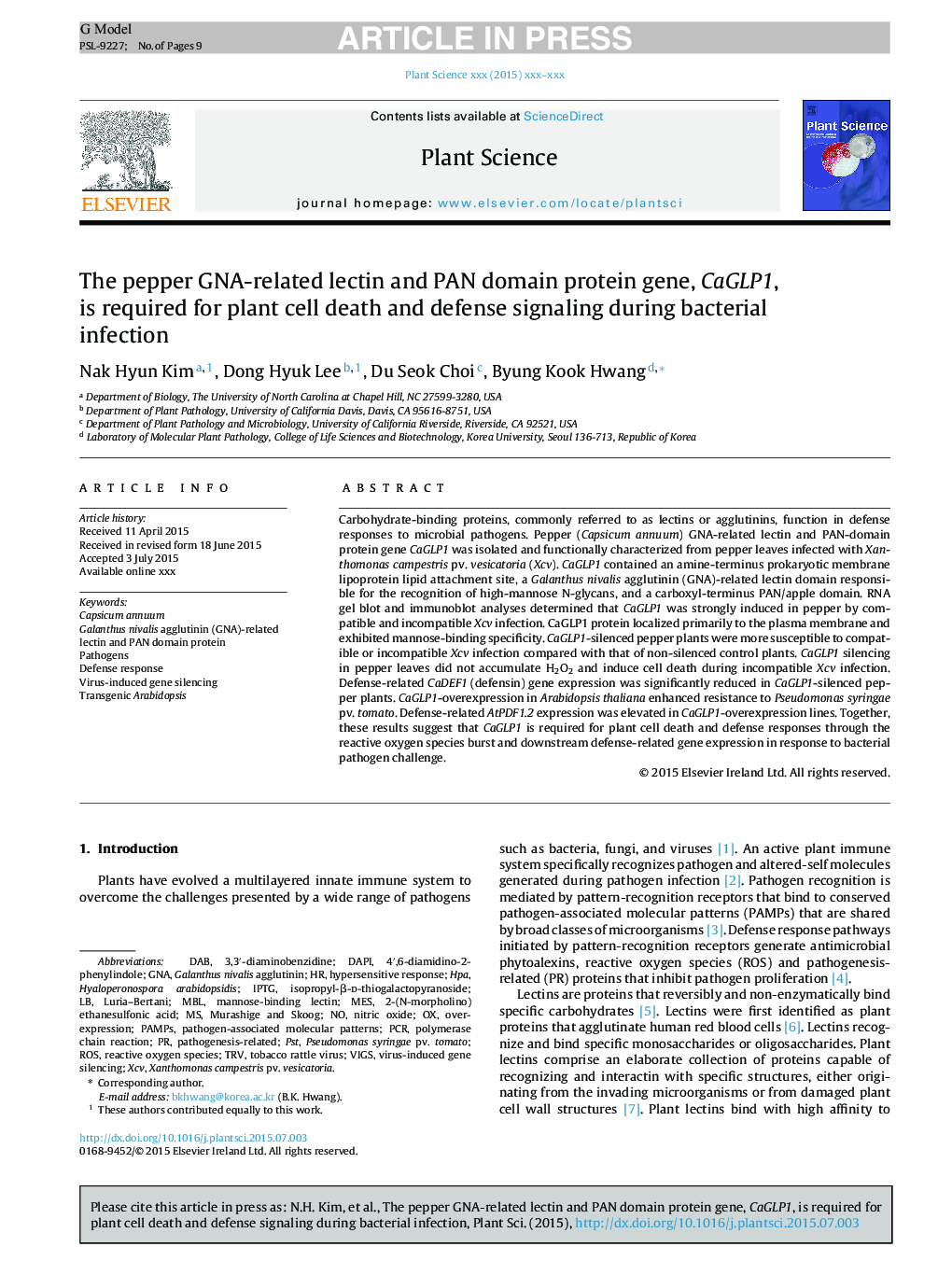| Article ID | Journal | Published Year | Pages | File Type |
|---|---|---|---|---|
| 8357501 | Plant Science | 2015 | 9 Pages |
Abstract
Carbohydrate-binding proteins, commonly referred to as lectins or agglutinins, function in defense responses to microbial pathogens. Pepper (Capsicum annuum) GNA-related lectin and PAN-domain protein gene CaGLP1 was isolated and functionally characterized from pepper leaves infected with Xanthomonas campestris pv. vesicatoria (Xcv). CaGLP1 contained an amine-terminus prokaryotic membrane lipoprotein lipid attachment site, a Galanthus nivalis agglutinin (GNA)-related lectin domain responsible for the recognition of high-mannose N-glycans, and a carboxyl-terminus PAN/apple domain. RNA gel blot and immunoblot analyses determined that CaGLP1 was strongly induced in pepper by compatible and incompatible Xcv infection. CaGLP1 protein localized primarily to the plasma membrane and exhibited mannose-binding specificity. CaGLP1-silenced pepper plants were more susceptible to compatible or incompatible Xcv infection compared with that of non-silenced control plants. CaGLP1 silencing in pepper leaves did not accumulate H2O2 and induce cell death during incompatible Xcv infection. Defense-related CaDEF1 (defensin) gene expression was significantly reduced in CaGLP1-silenced pepper plants. CaGLP1-overexpression in Arabidopsis thaliana enhanced resistance to Pseudomonas syringae pv. tomato. Defense-related AtPDF1.2 expression was elevated in CaGLP1-overexpression lines. Together, these results suggest that CaGLP1 is required for plant cell death and defense responses through the reactive oxygen species burst and downstream defense-related gene expression in response to bacterial pathogen challenge.
Keywords
DAPIXcvXanthomonas campestris pv. vesicatoriaMBLPSTGNAPAMPsIPTGTRVDAB2-(N-morpholino)ethanesulfonic acid3,3′-diaminobenzidine4′,6-diamidino-2-phenylindoleTransgenic ArabidopsisGalanthus nivalis agglutininMurashige and SkoogPseudomonas syringae pv. tomatoROSpathogen-associated molecular patternsVIGSisopropyl-β-d-thiogalactopyranosideOver-expressionCapsicum annuumLuria–BertaniMannose-binding lectinpathogenesis-relatedMeSHPANitric oxidepolymerase chain reactionPCRTobacco rattle virusvirus-induced gene silencingPathogensHypersensitive responseDefense responseReactive oxygen species
Related Topics
Life Sciences
Agricultural and Biological Sciences
Plant Science
Authors
Nak Hyun Kim, Dong Hyuk Lee, Du Seok Choi, Byung Kook Hwang,
